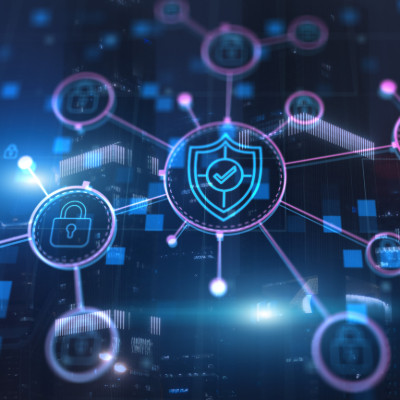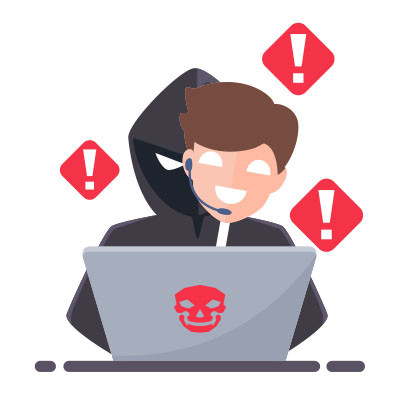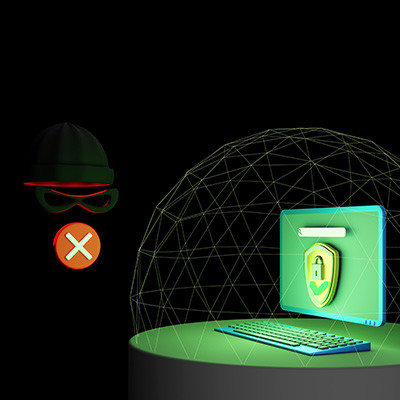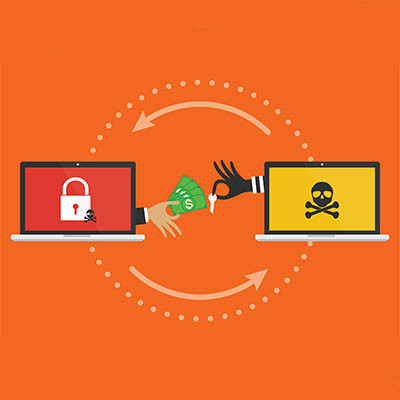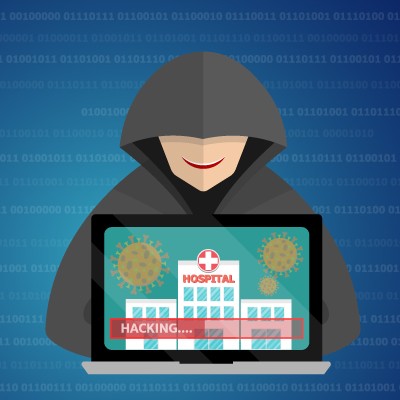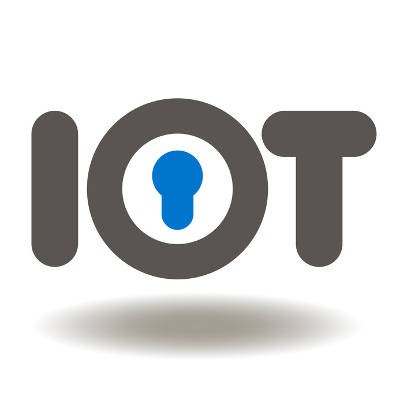Cyberattacks aren't just something that happens to other people, they’re a real-world threat to businesses, individuals, and even governments. Hackers are smart, sneaky, and persistent. The good news is that with a little strategic effort, you don't have to be helpless. Employing the right habits and strategies can help make it very hard for hackers to mess with you. In this month’s newsletter, we talk about how to get better at keeping hackers out of your network.
Telesys Voice and Data Blog
Phishing is a common trick where hackers pretend to be someone you trust to steal your personal information. For example, they might send an email that looks like it's from your bank, asking you to verify your account details. Here's why it's so effective.
Cyberthreats are increasingly sophisticated, and businesses have to do what they can to address these issues. Since cyberattacks can have a massively negative impact on your business, it stands to reason that you need a platform in place to enhance your employees’ awareness of Internet-based threats. This month we look at the top three IT security concerns businesses face and what should be done to confront them.
Believe it or not, if you were to rank your business’ greatest threats, risk factors, and vulnerabilities, your users would most likely belong somewhere toward the top. Human error is a big challenge to your security simply because cybercriminals understand that your employees are, in fact, human and will, in fact, make mistakes.
Let’s explore how cyberattacks exploit this tendency and how you can better protect your business from the ramifications.
Picture this scenario: while going about your daily routine, an email lands in your inbox, purportedly from a cybersecurity company. The alarming claim is that you've become the target of a hacking attack. Despite lacking IT expertise and being unfamiliar with your security agency's protocols, you trust the message and promptly respond. Little do you know, the email is a cleverly disguised cyberthreat, and you find yourself ensnared in their trap.
Social media scams are fraudulent schemes or deceptive activities that take place on various social media platforms. Users of Facebook, X (formerly Twitter), LinkedIn, and dozens of others have been victims of these attacks. These scams can target users of all ages and backgrounds, and they aim to exploit people's trust, curiosity, or lack of awareness. Social media scams come in various forms, and here are some common ones.
When it comes to valuable data, hackers will go out of their way to try and steal it, placing businesses in dangerous situations. In particular, healthcare data is attractive to hackers, and considering how lucrative the prospect of healthcare data is, companies need to take extra precautions to protect it. But what is it about healthcare data that makes it so attractive, anyway? Let’s dig into the consequences of potential attacks on healthcare data.
Has your business been targeted by hackers? Do you even know? Let’s face it, small businesses don’t typically worry all that much about cybersecurity. To many small business owners, they might see it as a luxury for their perceived risk. Unfortunately, the reality of the situation is that hackers and scammers are targeting small businesses more regularly than they have in the past and without some kind of dedicated cybersecurity strategy, there could be a good chance that your business could run into some problems because of it.
For millions of people, the rubber ducky is a benign reminder of childhood. Depending on when you were a child, the rendition of Sesame Street’s Ernie singing “Rubber Duckie, you’re the one,” is ingrained in your mind every time you hear the term. Unfortunately, the Rubber Ducky we are going to tell you about today has only fond recollection for people who are looking to breach networks they aren’t authorized to access or deliver malware payloads that are designed to cause havoc.
WhatsApp is one of the world’s most popular messaging applications. With over 2 billion users, WhatsApp is known for its relative security, as it is one of the few messaging applications that offers end-to-end encryption. A modified version of WhatsApp, called YoWhatsApp, has been reportedly deploying malware.
How quickly do you think it takes for a hacker to react to the disclosure of bugs and vulnerabilities? According to industry experts, the time for security professionals to react to zero-day threats and vulnerabilities might be decreasing. Is your organization prepared to act when important vulnerabilities like these are disclosed?
We understand that cybersecurity can be difficult to think about at times because of the terminology thrown around by industry professionals, but we want to do our part to help clear up some of the confusion. Today, we’re going to discuss the difference between vulnerabilities and exploits, as well as how your organization can do everything it can to ensure that both are minimized on your company network.
We’ve all heard the horror stories of phishing messages—those messages where someone is trying to steal information from you, be it sensitive information or financial credentials. There are various telltale signs of phishing attacks that can be identified, if you know where to look. Let’s take a look at what the FTC claims are the best ways to identify a phishing message.
What would you say if we told you that someone could buy access to your organization’s network for a measly $1,000? Well, this is the unfortunate reality that we live in, where hackers have commoditized the hard work you have invested in your organization. A study from KELA shows that the average cost to buy access to a compromised network infrastructure is insignificant at best, which is why it’s more important than ever to protect your business as best you can.
What if I told you that 92 percent of all organizations that are hit by a ransomware attack and agree to settle with the scammers, don’t ever see their data again? You’d probably say that you would never, ever pay and those that do, don’t make sense. Most people keep that stance until their choices are to pay for the data in the hopes of getting it back, or lose it completely. Let’s unpack ransomware and the strategy that hackers most utilize to deploy it: Phishing.
We’ve been predicting it, and feeling it, but now the numbers are in. Officially, cybersecurity attacks have increased significantly since the start of the COVID-19 crisis - in particular the lockdown.
Two-factor Authentication, also referred to as Multi-Factor Authentication, or 2FA, is typically where you log in to something and have to type in a small code from your mobile device in order to finish the sign-in process. It’s really the only thing protecting your accounts anymore, so it’s critical to use it.
The Internet is rife with potential threats. Some are situational, but most are deliberate actions made by malicious entities who are trying to obtain any semblance of value from you or your company. Some of these exploits have been around longer than you’d imagine possible. This has been made evident by huge Internet-based companies such as PayPal and Facebook testing positive for a 19-year-old vulnerability that once allowed hackers to decrypt encrypted data.
The term “hacker” is possibly one of the best-known technology-related terms there is, thanks to popular culture. Properties like The Girl with the Dragon Tattoo and the Die Hard franchise have given the layman a distinct impression of what a hacker is. Unfortunately, this impression isn’t always accurate. Here, we’ll discuss what real-life hackers are like, and the different varieties there are.
Now that the holidays have come and gone, you might have a couple of new gadgets in your home or office that connect to the Internet. Depending on what these gadgets are, you might have a serious security issue sitting right in front of you without realizing it. Some devices that don’t normally connect to the Internet--also known as Internet of Things devices (IoT)--aren’t as secure as you’d like them to be, particularly in a business environment.
Mobile? Grab this Article!
Tag Cloud

